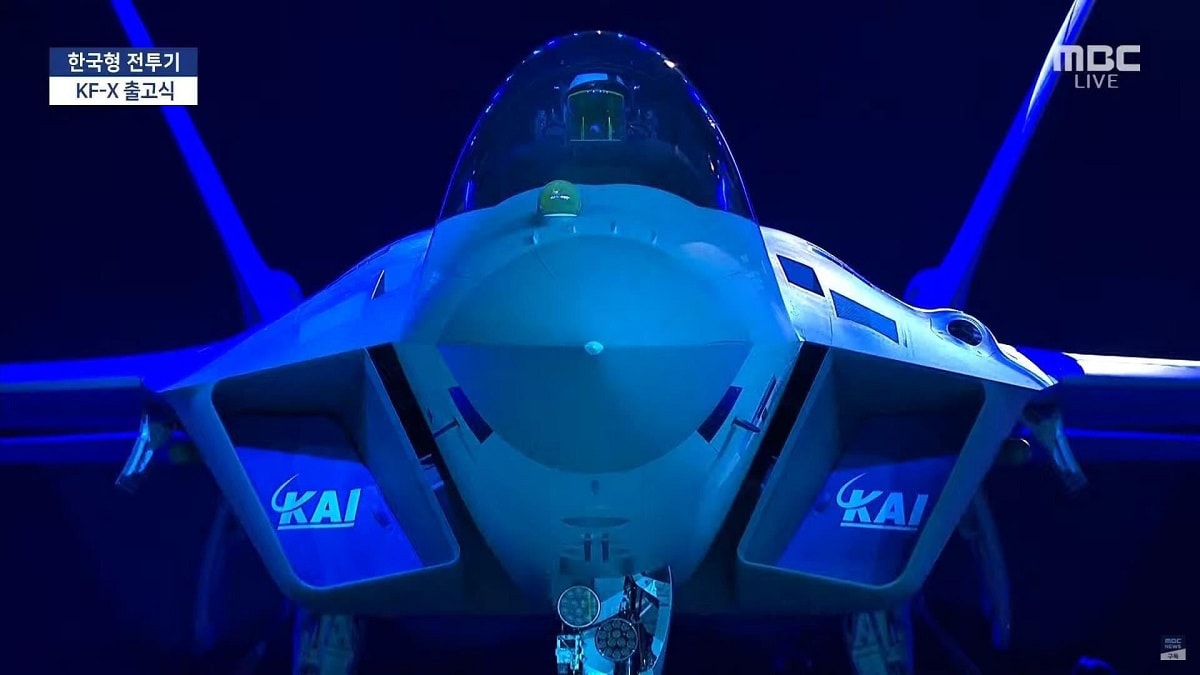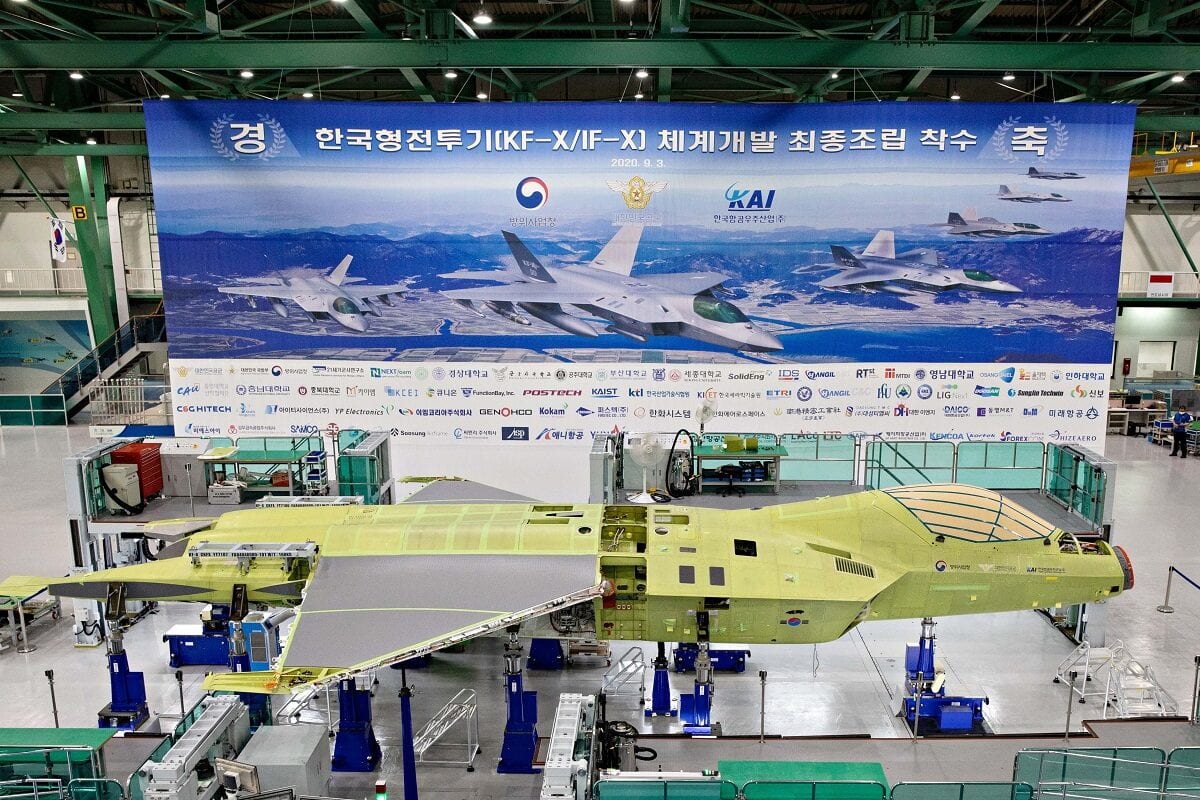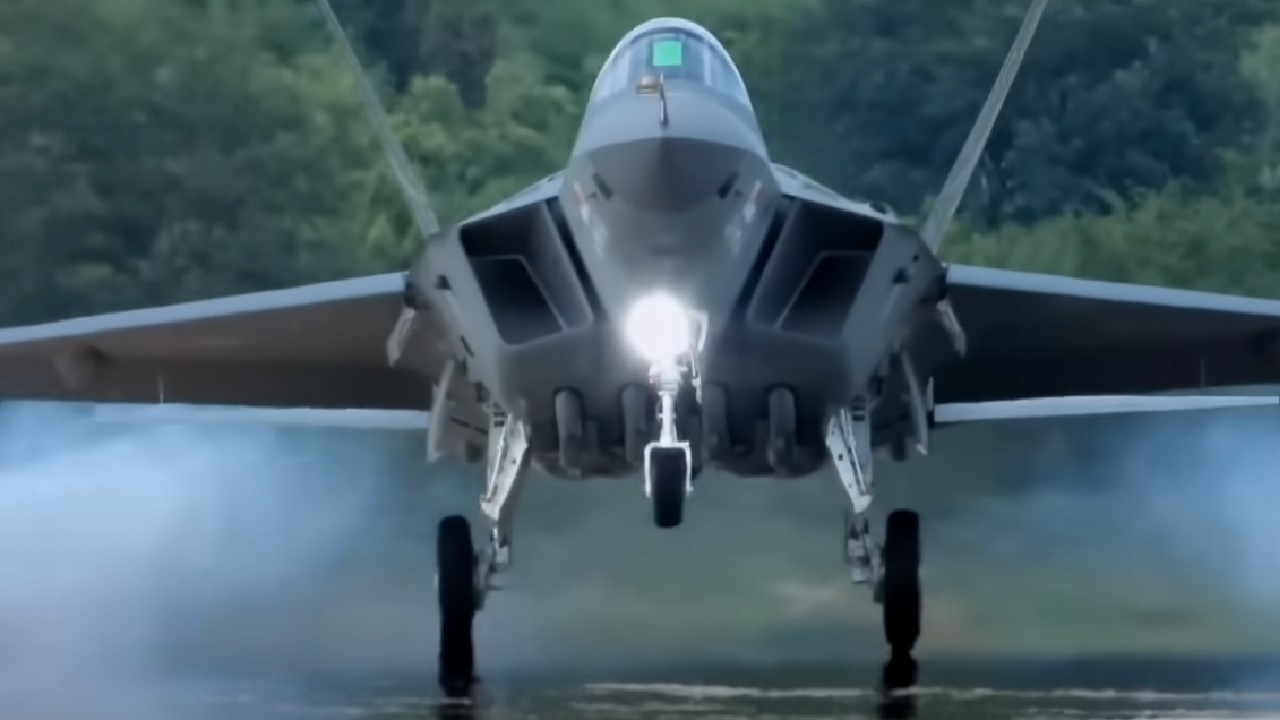South Korea’s KF-21 Boramae fighter is growing up. Boramae means “Young Hawk” or “Fighting Hawk.” The KF-21 is a bit of a mystery because it is in between a fifth-generation fighter and a fourth-generation plus-plus at this time. It has some radar-evading attributes to put it in the stealth fighter club with the Chinese J-20 and the Russian Su-57, not to mention the American F-35 and F-22. The KF-21 first took to the skies for its maiden flight in July. Now the South Koreans believe it can be produced in numbers by 2026.
KF-21 Boramae: Used to Best the North Korean and Chinese air forces
The main strategic and tactical use of the KF-21 is balancing against the North Koreans and Chinese. South Korea lives in a dangerous neighborhood and must continually rehearse offensive and defensive maneuvers to prepare for a shooting war with North Korea or China.
The KF-21, paired with South Korea’s two squadrons of F-35s, could make for a formidable air force. U.S. F-35s often train with South Korean fighters in preparation for joint air operations to protect the South.
Stealth Attributes Will Increase in Strength Over Time
The ROK Air Force plans to buy 40 KF-21s in the next four years and it could have 120 of the fighters in 2032. By then the KF-21 will have honed its dogfighting abilities. The KF-21 does not currently have internal weapons bays which hurts its stealth capability. But by 2026 the ROK hopes the Boramae will reduce its radar cross-section in an upgrade that will keep its munitions inside the airplane.
Substantial Testing and Research and Development Program
The KF-21 manufacturer, Korea Aerospace Industries, is working with the ROK air force to flight test the Boramae’s six prototypes a whopping 2,000 times. The defense contractor has ample human capital with 1,600 engineers working on the project. This robust program should work out all the kinks before full deployment in four years.
The fighter will have Block I and Block II variants by then with Block I slated for aerial combat and Block II adding ground attack roles. By the time the ROK air force fields Block III, the stealth capability should be akin to the F-35 or F-22. Block III could also incorporate artificial intelligence in the cockpit and could serve as the “quarterback” for a loyal wingman drone flight.
Electronic Warfare Suite
The KF-21 has a top-notch infrared targeting system and advanced active electronically scanning phased array radar. This is believed to be a better sensor package than existing North Korean and Chinese fighters. Plus, there are electronic warfare capabilities with radar jamming and countermeasures.
Diverse Ordnance Is Impressive
The Boramae Block II, with its weapons capacity of 7.6 tons, will field a homegrown air-launched cruise missile including Meteor beyond visual range air-to-air missiles, in addition to precision-guided bombs.
Cruise missiles give the KF-21 a stand-off advantage with the ability to remain in South Korean air space and fire the missile into North Korea. The KF-21 could even launch hypersonic missiles someday.
The KF-21 also has an automated collision avoidance system which increases survivability in case the pilot succumbs to high-G maneuvers and losses consciousness.
KF-21 Boramae: It Should Be Cost Effective for Overseas Sales
The semi-stealth KF-21 would not only serve the Republic of Korea (ROK) air force but also test the export market. All of these technological advances require a big budget and South Korea intends to pay for the development of the KF-21 with international sales. It is already working with Indonesia on development, but it needs a large customer base. The price isn’t bad at $60 million per airplane.

Image: Screenshot.

Image Credit: Media Handout.

The KF-21 is a big deal for the ROK air force. It could one day dominate the skies over the Korean peninsula. The stand-off missile strike capability is important as are radar and electronic warfare features. The critical path will be continued technological development for increased stealthiness and weapons development in cruise missile and hypersonic weapons advancements. The KF-21 has significant potential that North Korea and China should fear.
Expert Biography: Serving as 1945’s Defense and National Security Editor, Dr. Brent M. Eastwood is the author of Humans, Machines, and Data: Future Trends in Warfare. He is an Emerging Threats expert and former U.S. Army Infantry officer. You can follow him on Twitter @BMEastwood. He holds a Ph.D. in Political Science and Foreign Policy/ International Relations.

